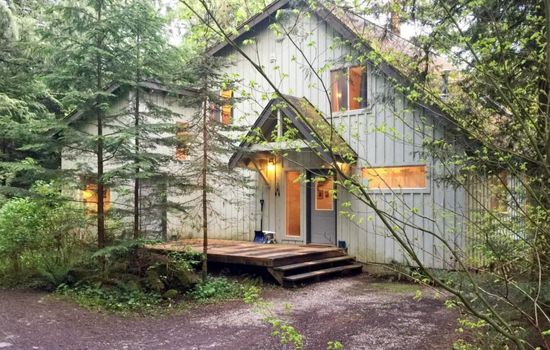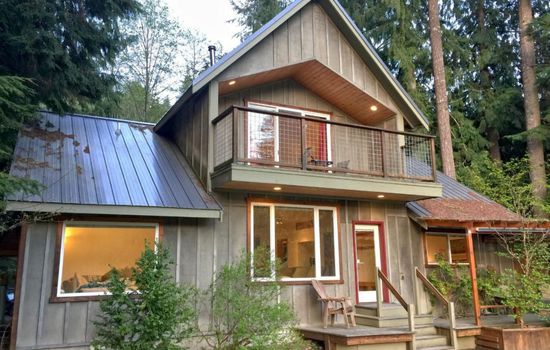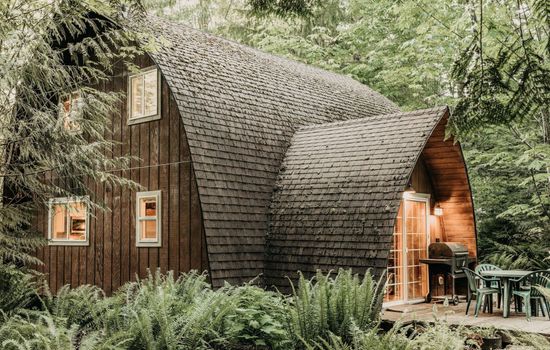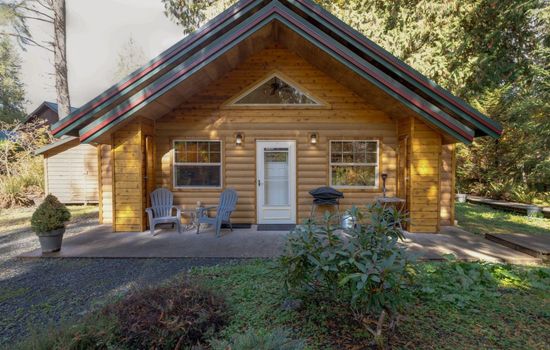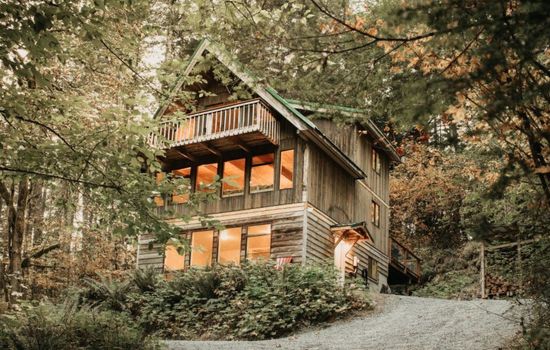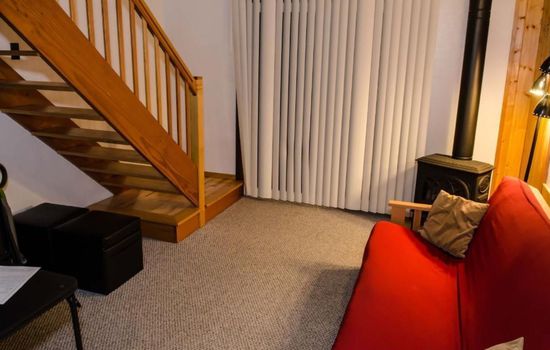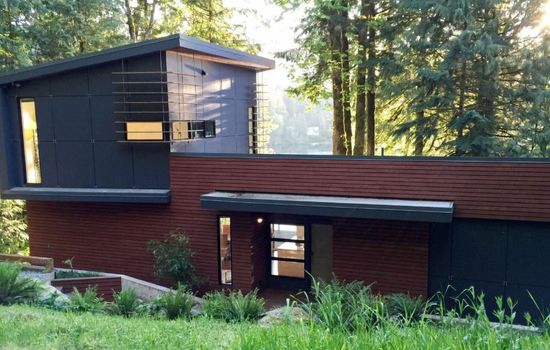The visitor center at Ebey’s Landing National Historical Reserve is open from 11am to 4pm, but hours may vary. On weekends, it operates from 10am to 4pm.
There is no entrance fee for Ebey’s Landing National Historical Reserve itself, but three state parks within the reserve require a Discover Pass: $10 daily or $30 annually.
From Seattle, take the Mukilteo-Clinton ferry, then drive SR 525 to SR 20, passing through the charming town of Coupeville, nestled on Whidbey Island.
Free parking at Coupeville Library lot on Alexander Street and Island Transit Park and Ride on Main Street. No specific RV or motorcycle restrictions mentioned. No overnight parking or fees.
Accessibility & permits
Emergency
- Cell service availability:None
Information not accurate?
Help us improve by making a suggestion.
Ebey’s Landing National Historical Reserve, situated on the picturesque Whidbey Island in Puget Sound, is a verdant tapestry of history, agriculture, and natural beauty. Established in 1978 as the nation’s first national historical reserve, this 17,572-acre preserve safeguards a rural community and its unbroken historical record of exploration and settlement.
The reserve is home to over 400 historic buildings, 14 working farms, and a plethora of outdoor activities. Hikers can traverse the Bluff Loop Trail, careful to avoid erosion, and explore the Pacific Northwest National Scenic Trail. The shores of Penn Cove, lined with the charming maritime village of Coupeville, offer ideal spots for kayaking, birdwatching, and beachcombing.
Fort Casey and Fort Ebey State Parks, within the reserve, provide a glimpse into the rich military history of Central Whidbey Island. The nearby Admiralty Inlet Natural Area Preserve is a haven for wildlife, including seals and a variety of seabirds. As seasons change, the prairies of Whidbey Island transform with blooming wildflowers in spring and golden harvests in autumn.
In Coupeville, visitors can stroll through the historic district, visit the Sergeant Clark House, and enjoy local cuisine at one of the many restaurants. Summer brings Ranger-led tours and outdoor concerts, while seasonal festivals celebrate the area’s maritime and agricultural heritage. For those seeking more adventure, local outfitters offer kayaking and bicycling rentals to explore the reserve’s extensive trails and shoreline.
This unique blend of history, culture, and natural splendor makes Ebey’s Landing National Historical Reserve an extraordinary destination for those who appreciate the intricacies of a living historic landscape.
- Area (mi²)
- 25
- Annual visitors
- 1 000 000
- Established year
- 1978
Top 3 Facts about Ebey’s Landing National Historical Reserve
Whidbey Island, where the reserve is located, was formed by glacial moraine and ranges no higher than 500 feet in elevation, with the island stretching nearly 40 miles in a north-south direction. It is the largest island in Puget Sound and has a marine environment providing one of the most uniform temperatures in the country.
This coastal reserve is home to a diverse array of wildlife, including raccoons, deer, and coyotes, along with a vibrant bird population and sea creatures. The landscape is dotted with rare flora such as the golden paintbrush plant, and prairie habitats that are virtually extinct in Western Washington. Perego’s Lake, a pristine coastal wetland, supports a unique ecosystem, while the surrounding bluffs offer stunning views of the Olympic Peninsula, Mount Rainier, and the Cascade Mountains. Here, you can hike trails, kayak, or horseback ride through a historically rich and ecologically significant terrain.
Along the shores of Puget Sound, the waters shimmer in a deep azure hue, reflecting the misty skies of the Pacific Northwest. The surrounding landscape is dotted with historic farms and prairies, unchanged since the 1850s, and backed by the gentle slopes of Whidbey Island, where Fort Casey State Park stands guard. Here, the Admiralty Inlet Natural Area Preserve protects a pristine coastal ecosystem, with temperatures ranging from chilly 35°F winters to mild 65°F summers. The nearby Pacific Northwest National Scenic Trail winds through this verdant tapestry, offering a glimpse into a region where nature and history intertwine seamlessly.
Family programs
- Junior Ranger
- Ranger-led Tours
- Self-guided Tours
- Workshops & Hands-on Activities
- Living History & Cultural Demos
- Scavenger Hunts.
Travel Tips
Plan Ahead
Visit in spring for wildflowers and the Penn Cove Mussel Festival. Plan a day or two to explore trails. Park at Ebey’s Landing Road or Sunnyside Cemetery. Wear sturdy shoes, bring water and snacks. Stop at the visitor center before hiking. Anticipate narrow, rocky paths and rest often. Pack meals as options are limited.
Pack Appropriately
Pack waterproof hiking boots, a rain jacket, and layers for unpredictable weather. Bring a dry bag, trekking poles, and a first aid kit. For longer stays, include a tent, sleep system, and water filter. Don’t forget sunscreen, bug spray, and a headlamp. Check the tide schedule if visiting the coast.
Respect Wildlife
Keep a safe distance from wildlife – 100 yards from bears and wolves, 25 yards from others. Never feed animals, and dispose of trash properly to preserve natural behaviors and habitats. Stay on designated trails to minimize impact. Respect the environment as you would your own.
Stay Informed
Stay informed about weather, fire restrictions, and park rules. Exercise caution on trails, near ledges, and water. Contact park authorities at 911 for emergencies.
Seasons
In spring, enjoy mild temperatures (40s-60s°F) and blooming wildflowers. Visit April through November for the farmers market, or attend the monthly workshops on the second Thursday. Stroll along the wharf and explore historic sites amidst gentle spring rains. Ideal for outdoor enthusiasts.
Summer brings warm temperatures (60s-70s°F) and mild weather, ideal for hiking and sightseeing. Enjoy the Summer Tasting Extravaganza in June, featuring local wines and delicacies. Experience live music and historic charm at the End of Season Celebration in August. Perfect for outdoor enthusiasts and history buffs.
Visit in fall for mild temperatures (40s-60s°F) and crisp weather. Enjoy the farmers market through November and vibrant foliage. Ideal time for hiking with breathtaking views of the Olympic mountains and Mount Baker.
Experience the serene beauty of winter from December to February, with temperatures in the 40s and 50s. Mild maritime climate, cool days, and foggy nights create a mystical ambiance, ideal for tranquil hikes and historical exploration. Recommended for those seeking a peaceful, nature-driven escape.
Information not accurate?
Help us improve by making a suggestion.
Where to stay
Frequently Asked Questions
Ready to dive into what Ebey’s Landing National Historical Reserve has to offer? Let’s tackle some of the burning questions you might have as you plan your visit!
-
Ebey’s Landing is named after Colonel Isaac Neff Ebey, one of Whidbey Island’s earliest settlers, who claimed land here in 1850. Ebey built his home and established one of the region’s first farms near the shoreline, making the site historically significant.
-
The popular Ebey’s Landing Loop Trail is approximately 5.6 miles long and typically takes around 2 to 3 hours to complete. The hike offers scenic views of Admiralty Inlet, Olympic Mountains, and the historic prairie landscape.
-
Visitors to Ebey’s Landing can hike scenic trails, explore historic landmarks like the Ferry House and Jacob Ebey House, birdwatch, or enjoy photography of the coastal prairie landscape. The shoreline is also popular for beachcombing, fishing, and wildlife viewing.
-
Pets are welcome throughout the reserve, including the Ebey’s Landing Trail, but must remain on a leash no longer than six feet. Owners should also ensure pets do not disturb local wildlife or historic structures.
-
Coupeville, located just a few miles away on Whidbey Island, provides charming inns, restaurants, cafés, and boutique shops. Nearby Oak Harbor also offers additional dining options, accommodations, supermarkets, and visitor services.


